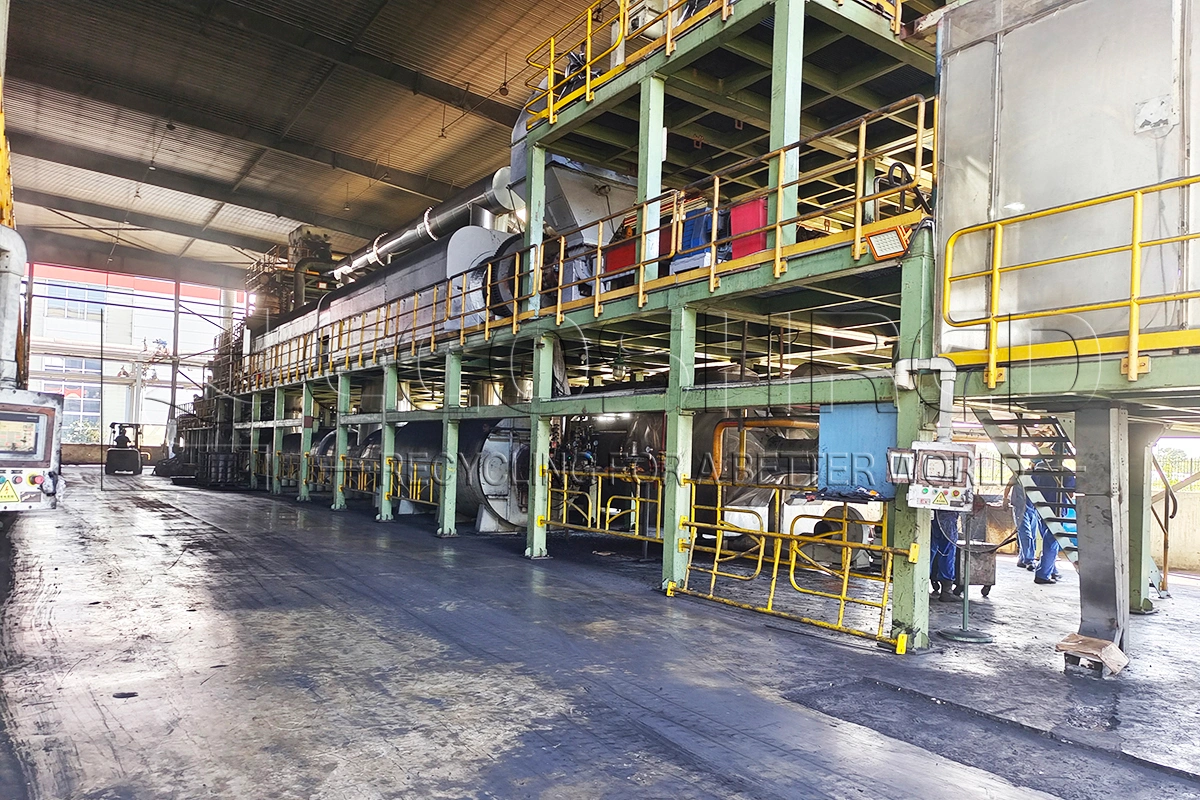When it comes to recycling waste tires, pyrolysis technology offers two main types of systems: batch type pyrolysis plants and continuous pyrolysis plants. Each has its unique features and advantages, making them suitable for different operational needs. Understanding the differences between these systems can help you choose the right solution for your tire recycling business.
Batch type pyrolysis plants are designed for quick-start-business operations. They process tires in batches, meaning the system is loaded with a certain amount of tires, sealed, and then heated to break down the materials. One of the key advantages of batch systems is that they don't require tires to be pre-shredded. Whole tires can be fed directly into the reactor, making the process simpler and more cost-effective for smaller operations. However, batch systems typically have lower processing capacities (not certainly) and longer cycle times compared to continuous systems.
On the other hand, continuous pyrolysis plants are ideal for large-scale recycling operations. These systems are designed to run non-stop, processing a continuous flow of rubber granules recycled from tires. Because of their design, continuous systems require tires to be pre-shredded into small pieces, usually less than 20mm in size. This step is crucial because it allows for the efficient separation of steel wires before the pyrolysis process begins. The separated steel can then be recycled separately, while the rubber is converted into fuel oil, carbon black, and syngas. Continuous systems offer higher processing capacities and greater efficiency, making them a popular choice for industrial-scale recycling.
Both types of pyrolysis plants have their place in the recycling industry. Batch systems are perfect for startups or smaller operations with limited budgets, while continuous systems are better suited for large-scale projects with high processing demands. Regardless of the type, the pyrolysis process itself remains the same: heating materials in the absence of oxygen to break them down into valuable byproducts.
One of the key benefits of pyrolysis is its ability to transform waste tires into useful resources. For example, the fuel oil produced can be used as an industrial fuel, while carbon black can be reused in manufacturing. Additionally, the steel wires extracted during the process can be sold to metal recycling facilities, creating an additional revenue stream.
If you're considering investing in a pyrolysis plant, it's important to choose the right type for your needs. Factors like processing capacity, feedstock preparation, and operational costs should all be taken into account. Working with a reliable pyrolysis plant manufacturer can help you design a system that meets your specific requirements.
Want to learn more about how pyrolysis can work for your business? Contact us today to explore our batch and continuous pyrolysis solutions!

